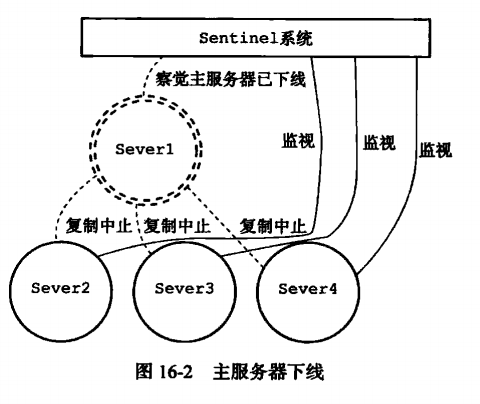标签:设置密码 ipv4 parallel roo ORC should 打印 nts 可用性
三台服务器:
192.168.126.100(master)
192.168.126.110(slaver)
192.168.126.120(slaver)
拷贝192.168.126.100(主)服务器中的Redis到从机,保证Redis版本、环境一致:
scp -r redis-3.2.0/ root@192.168.126.110:/usr/local/ // 安装目录
scp -r redis/ root@192.168.126.110:/usr/local/ // 自定义配置、数据目录
scp -r redis-3.2.0/ root@192.168.126.120:/usr/local/
scp -r redis/ root@192.168.126.120:/usr/local/Redis的复制功能是支持多个数据库之间的数据同步。一类是主数据库(master)一类是从数据库(slave),主数据库可以进行读写操作,当发生写操作的时候自动将数据同步到从数据库,而从数据库一般是只读的,并接收主数据库同步过来的数据,一个主数据库可以有多个从数据库,而一个从数据库只能有一个主数据库。
通过redis的复制功能可以很好的实现数据库的读写分离,提高服务器的负载能力。主数据库主要进行写操作,而从数据库负责读操作。
过程:
1:当一个从数据库启动时,会向主数据库发送sync命令,
2:主数据库接收到sync命令后会开始在后台保存快照(执行rdb操作),并将保存期间接收到的命令缓存起来
3:当快照完成后,redis会将快照文件和所有缓存的命令发送给从数据库。
4:从数据库收到后,会载入快照文件并执行收到的缓存的命令。
注意:redis2.8之前的版本:当主从数据库同步的时候从数据库因为网络原因断开重连后会重新执行上述操作,不支持断点续传。redis2.8之后支持断点续传。
只需要修改两台从节点中redis的配置文件:
注意:如果主数据库设置了密码,需要在从数据的配置文件中通过masterauth参数设置主数据库的密码
| 节点 | 效果 |
|---|---|
| 192.168.126.100(master) |  |
| 192.168.126.110(slaver) |   |
| 192.168.126.120(slaver) |   |
启动从节点的redis,可能出现以下错误:
解决办法:
1、修改主节点redis的配置文件:
bind 0.0.0.02、重启服务
Redis-Sentinel是Redis官方推荐的高可用性(HA)解决方案。实际上这意味着你可以使用Sentinel模式创建一个可以不用人为干预而应对各种故障的Redis部署。
Redis Sentinel 是一个分布式系统, 你可以在一个架构中运行多个 Sentinel 进程(progress), 这些进程使用流言协议(gossip protocols)来接收关于主服务器是否下线的信息, 并使用投票协议(agreement protocols)来决定是否执行自动故障迁移, 以及选择哪个从服务器作为新的主服务器。



修改110、120服务器下Sentinel的配置文件sentinel.conf:
sentinel monitor mymaster 192.168.126.100 6379 1sentinel down-after-milliseconds mymaster 5000sentinel parallel-syncs mymaster 1sentinel failover-timeout mymaster 180000方式一:使用redis-sentine命令启动 Sentinel 系统:
redis-sentinel /path/to/sentinel.conf方式二:redis-server命令启动一个运行在 Sentinel 模式下的 Redis 服务器:
redis-server /path/to/sentinel.conf --sentinel启动110、120服务器下的Sentinel 服务:
192.168.126.110:
192.168.126.120:
查看sentinel的状态:
问题一:
[root@huangyk120 etc]# redis-cli -h 192.168.126.120 -p 26379 info Sentinel
Could not connect to Redis at 192.168.126.120:26379: Connection refused解决办法:
配置文件redis.conf配置了只在127.0.0.1上绑定监听,取消该配置。
################################## NETWORK #####################################
# By default, if no "bind" configuration directive is specified, Redis listens
# for connections from all the network interfaces available on the server.
# It is possible to listen to just one or multiple selected interfaces using
# the "bind" configuration directive, followed by one or more IP addresses.
#
# Examples:
#
# bind 192.168.1.100 10.0.0.1
# bind 127.0.0.1 ::1
#
# ~~~ WARNING ~~~ If the computer running Redis is directly exposed to the
# internet, binding to all the interfaces is dangerous and will expose the
# instance to everybody on the internet. So by default we uncomment the
# following bind directive, that will force Redis to listen only into
# the IPv4 lookback interface address (this means Redis will be able to
# accept connections only from clients running into the same computer it
# is running).
#
# IF YOU ARE SURE YOU WANT YOUR INSTANCE TO LISTEN TO ALL THE INTERFACES
# JUST COMMENT THE FOLLOWING LINE.
# ~~~~~~~~~~~~~~~~~~~~~~~~~~~~~~~~~~~~~~~~~~~~~~~~~~~~~~~~~~~~~~~~~~~~~~~~
#bind 127.0.0.1问题二:
DENIED Redis is running in protected mode because protected mode is enabled, no bind address was specified, no authentication password is requested to clients. In this mode connections are only accepted from the loopback interface. If you want to connect from external computers to Redis you may adopt one of the following solutions: 1) Just disable protected mode sending the command ‘CONFIG SET protected-mode no‘ from the loopback interface by connecting to Redis from the same host the server is running, however MAKE SURE Redis is not publicly accessible from internet if you do so. Use CONFIG REWRITE to make this change permanent. 2) Alternatively you can just disable the protected mode by editing the Redis configuration file, and setting the protected mode option to ‘no‘, and then restarting the server. 3) If you started the server manually just for testing, restart it with the ‘--protected-mode no‘ option. 4) Setup a bind address or an authentication password. NOTE: You only need to do one of the above things in order for the server to start accepting connections from the outside.登录redis client
[root@huangyk120 etc]# redis-cli -h 192.168.126.120 -p 6379或者查看Sentinel信息
[root@huangyk120 etc]# redis-cli -h 192.168.126.120 -p 26379 info Sentinel都可能以上错误。
原因分析:
默认情况下redis运行在保护模式,这种模式下,如果没有设置访问密码,只允许本地回路访问。如果需要远程访问
1:修改protected-mode为no
2:添加认证,设置密码
#requirepass foobared
requirepass 123456解决办法:
修改配置文件redis.conf中的protected-mode为no:
# By default protected mode is enabled. You should disable it only if
# you are sure you want clients from other hosts to connect to Redis
# even if no authentication is configured, nor a specific set of interfaces
# are explicitly listed using the "bind" directive.
protected-mode no巨坑(这个问题坑了我好久):
只修改redis.conf的protected-mode为no,发现查看Sentinel信息还是报错。官方在redis.conf的注释说明中有protected-mode这一配置项,但sentinel.conf的注释中完全没有提到过该配置项,尝试在sentinel.conf中加入
protected-mode no 保存并重新启动sentinel。
查看sentinel的状态,终于成功了!!! 
关闭100上的主redis服务(shutdown)。
查看sentinel哨兵日志信息,发现110上的redis服务被选举为主服务,sentinel自动完成了故障切换。
启动刚才被shutdown的110上的redis服务并查看,发现它变成了从服务。
代码示例:
package redistest;
import java.util.HashSet;
//需要在pom.xml文件中引入jedis依赖
import redis.clients.jedis.HostAndPort;
import redis.clients.jedis.Jedis;
import redis.clients.jedis.JedisPoolConfig;
import redis.clients.jedis.JedisSentinelPool;
public class SentinelTest {
public static void main(String[] args) {
// 使用HashSet添加多个sentinel
HashSet<String> sentinels = new HashSet<String>();
// 添加sentinel主机和端口
sentinels.add("192.168.126.110:26379");
sentinels.add("192.168.126.120:26379");
// 创建config
JedisPoolConfig poolConfig = new JedisPoolConfig();
// 控制一个pool最多有多少个状态为idle(空闲的)的jedis实例。
poolConfig.setMaxIdle(10);
// 控制一个pool最多有多少个jedis实例。
poolConfig.setMaxTotal(100);
// 表示当borrow(引入)一个jedis实例时,最大的等待时间,如果超过等待时间,则直接抛出JedisConnectionException;
poolConfig.setMaxWaitMillis(2000);
// 在borrow一个jedis实例时,是否提前进行validate操作;如果为true,则得到的jedis实例均是可用的;
poolConfig.setTestOnBorrow(true);
// 通过Jedis连接池创建一个Sentinel连接池
JedisSentinelPool pool = new JedisSentinelPool("mymaster", sentinels, poolConfig);
// 获取master的主机和端口
HostAndPort currentHostMaster = pool.getCurrentHostMaster();
System.out.println(currentHostMaster.getHost() + "--" + currentHostMaster.getPort());
// 从Sentinel池中获取资源
Jedis resource = pool.getResource();
// 打印资源中key为name的值
System.out.println(resource.get("a"));
// 关闭资源
resource.close();
}
}执行结果:
标签:设置密码 ipv4 parallel roo ORC should 打印 nts 可用性
原文地址:https://www.cnblogs.com/wangmo/p/9447889.html